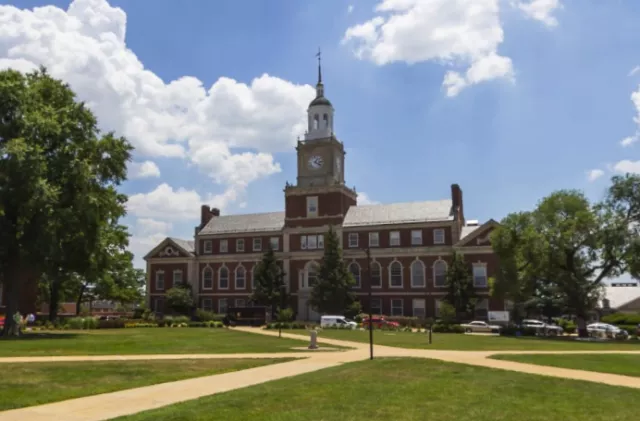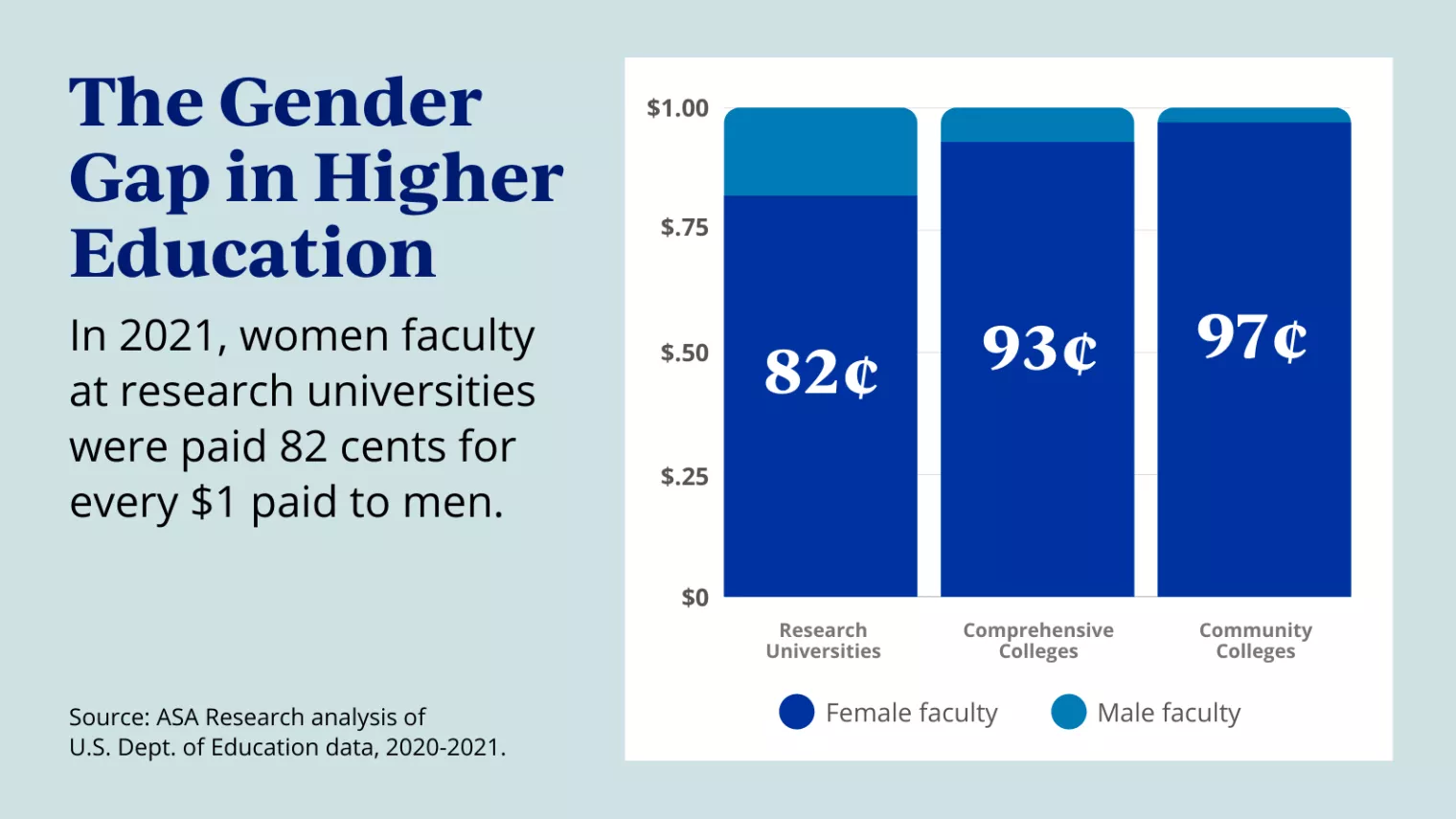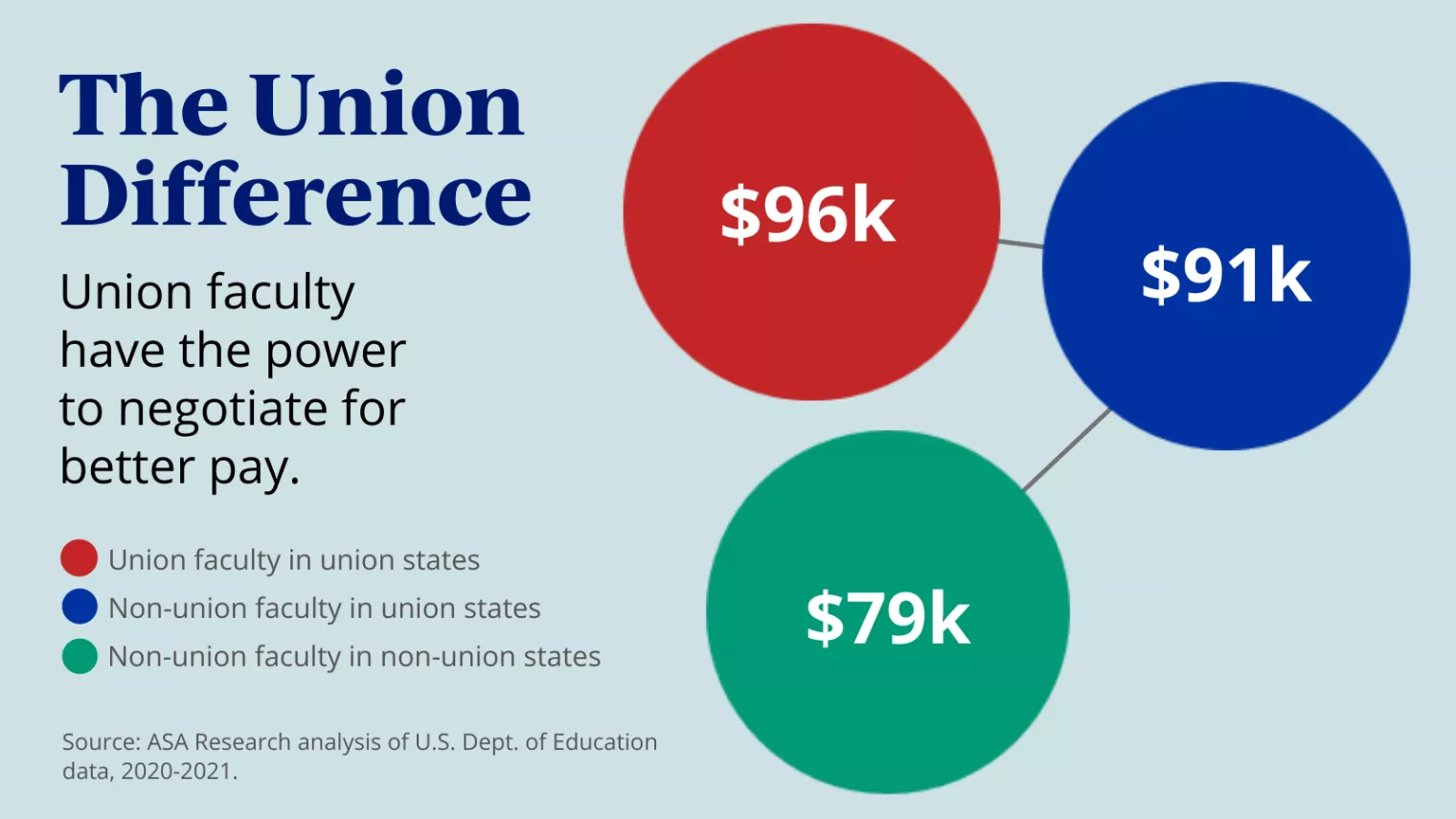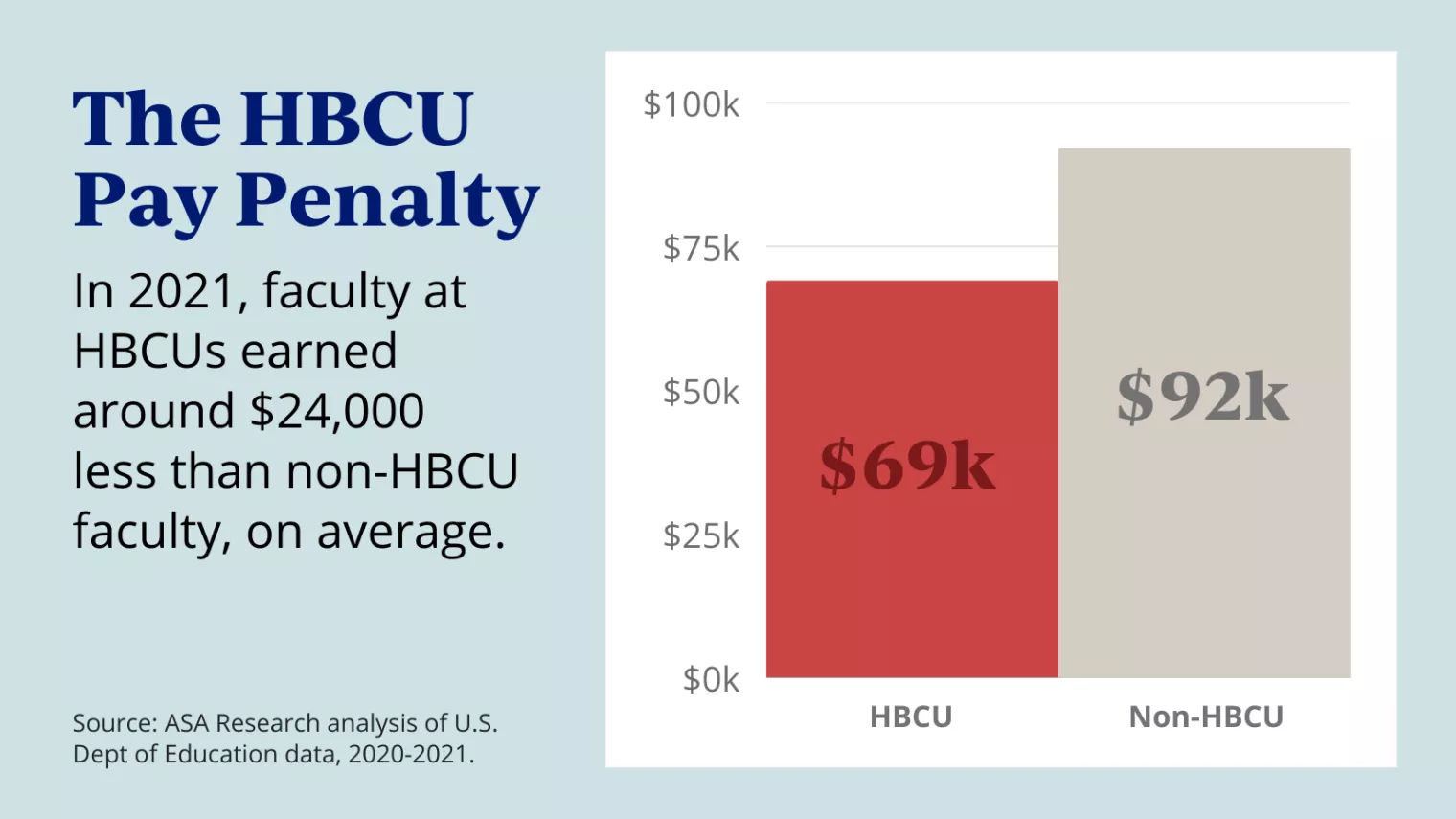
Special Report Professional Pay in Higher Education
Faculty, staff and graduate assistants should be fairly compensated for their work. But the latest research from NEA and its partners shows pay hasn't kept up with rising costs of living, and persistent inequities exist for women faculty and for faculty at historically Black colleges and universities (HBCUs.)
For decades, the pay earned by college and university faculty—especially adjunct or contingent faculty—has failed to keep pace with the rising cost of living. Too many higher-education employees, including academic staff and support professionals, struggle to pay their bills.
A new examination of federal data from 2021 - 2022 shows that this alarming trend has continued, with HBCU faculty particularly affected. The good news: our research shows faculty who have a union are able to bargain to better pay.
One thing is clear: It’s time to join your local and state affiliates in fighting for fair pay for the faculty and staff whose work is vital to the mission of their institutions and integral to the wellbeing of our nation.
Faculty Pay: By the Numbers
The below graphics are based on annual average salaries

Five Things To Know About Faculty Pay
Get the key takeaways from NEA's 2023 report on full-time faculty pay. Learn about the union advantage and the HBCU pay penalty, and where faculty are paid best and worst.
Resources
Download and share these high-level summaries of this year's report.

The Union Difference
Federal salary data shows that faculty who belong to unions are able to negotiate for higher pay.

Graduate Assistant Pay
There’s a reason more graduate assistants are unionizing: In 2021, they were paid an average $18,661.

The HBCU Pay Penalty
In 2021, HBCU faculty earned $24,000 less, on average, than faculty who work at non-HBCU institutions.

Collateral Damage: The Effects of the Pandemic on Faculty Pay, Cont'd.
A new NEA report, released in April 2023, shows how much faculty earned, on average, at every public institution in the U.S. in 2022.
Member Voices
NEA members share their experiences fighting for fair pay

Loretta Ragsdell, City Colleges of Chicago
"In response to the unfair treatment I and other members experienced ... I turned to the union’s leadership for help."

Elizabeth Davenport, Alabama State University
"Everyone on my wing has joined the union, and in September I became chair of the Faculty Senate."



